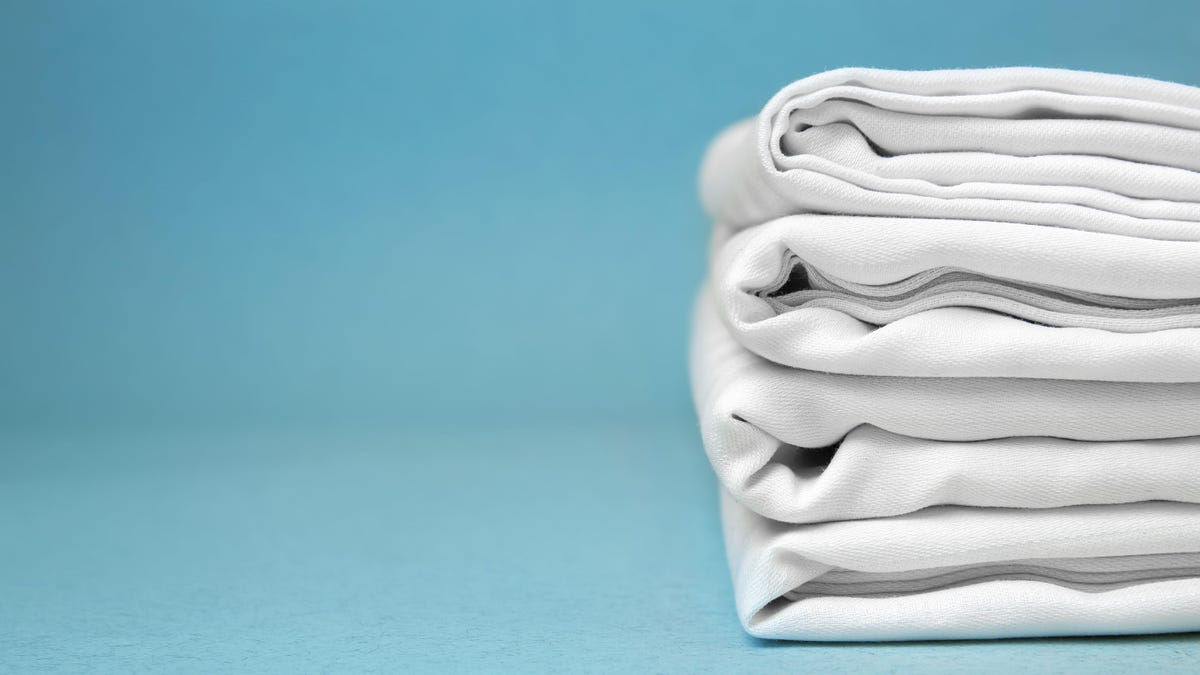How to Soften Rough, Scratchy Sheets Without Fabric Softener
There’s nothing like the feeling of climbing into bed after putting on a set of new, clean sheets. But if you’re used to well-worn cotton sheets—or ones made of jersey, bamboo, or microfiber—a new set of sheets (especially if...


Photo: Pixel-Shot (Shutterstock)
There’s nothing like the feeling of climbing into bed after putting on a set of new, clean sheets. But if you’re used to well-worn cotton sheets—or ones made of jersey, bamboo, or microfiber—a new set of sheets (especially if they’re percale, linen, or other higher-end types of cotton) may not be as soft as you’d like them to be after one wash (or several).
And this isn’t simply a matter of using some fabric softener and having your stiff sheets suddenly feeling broken-in and comfortable: It means trying new washing and drying methods. Here’s what to know.
What causes sheets to feel stiff and scratchy?
There are several different reasons why your sheets may feel scratchy or stiff, and some are easier to soften than others. Generally speaking, here are some of the most common reasons why your sheets feel a bit rough:
Brand new sheets (of any material) usually come with a chemical coating that make them look and feel crisp (i.e. stiff) so they look better in the packagingOlder sheets can feel rough if they were washed and/or dried improperlySheets that have been in storage for a long time can dry out and feel roughLower-quality sheets can feel scratchy—even after being washed numerous timesPolyester or nylon sheets can pill (form tiny balls) over timeYou’re used to a softer, synthetic-material sheet, then 100% cotton sheets may feel rough in comparison (especially percale)You’re using more detergent and/or fabric softener than the manufacturer’s instructions recommendYou’re overstuffing the washer, and the detergent isn’t able to fully rinse outHow to soften rough, scratchy sheets
Ready to soften those sheets? Here are some methods to consider:
Shave off pilling
If your sheets are pilling, before you do anything else, you’re going to want to get rid of those annoying little balls. You can use a dedicated fabric shaver if you already have one, but a disposable or flat razor works just as well. Shave the sheets as you would your face, legs, etc., being careful not to cut the fabric.
After you finish shaving, use a lint roller or some tape to remove anything that’s left behind. When you’re done, you can use one of the methods below if they’re not soft enough yet.
Washing techniques for softening sheets
Get rid of chemicals on new sheets
Make your new sheets softer faster by getting rid of the packaging chemicals. To do this, pop the sheets in the washer and select a setting with warm or cool water (basically, anything other than a hot setting). Add one cup of baking soda (and nothing else) as the drum is filling up with water.
When it gets to the final rinse cycle, be sure the machine is on a cold-water setting, and add one cup of white vinegar. Once the final cycle is done, keep the sheets in the machine and wash them again, using half the amount of detergent as you normally would.
Use baking soda and vinegar for general softening
Instead of detergent, wash your sheets with one full cup of baking soda and ½ cup of vinegar, and run for one full cycle—starting on hot water, and then switching to cold during the rinse cycle.
Add vinegar to the wash cycle
Along with your regular detergent, add 1/2 cup of white vinegar to the wash cycle. The vinegar will both soften and freshen your sheets.
Bathe sheets in Epsom salt
Every so often—especially when your sheets are feeling a bit scratchy—skip the washing machine and give them a bath. Fill your tub with cold water, add about 1/3 cup of Epsom salt, and stir until the salt has dissolved completely. (Use a wooden spoon to avoid having to put your hands in cold water for a few minutes).
Soak the sheets overnight, then thoroughly rinse them the next day. Line dry the sheets, if possible. Otherwise, use one of the dryer techniques mentioned below.
If you don’t have (or don’t want to use) Epsom salt, you can substitute six tablespoons of borax, or two handfuls of table salt, and follow the directions above.
Drying techniques for softening sheets
Line-dry
After trying one of these washing methods, instead of popping your sheets in the dryer, line dry your sheets, if possible. This will help soften the fibers more than machine-drying them.
Use dryer balls
Skip the dryer sheets and use dryer balls (which are usually made from tightly compressed wool, plastic, or rubber) instead. These will help fluff up your sheets.
Dry on a lower-temperature setting
Setting your dryer to the highest temperature possible may get the job done faster, but it can also make your sheets feel rough. Instead, opt for the lowest temperature setting your schedule allows. Drying with less heat gets you closer to line-dried softness—especially when you use dryer balls.

 BigThink
BigThink 
































